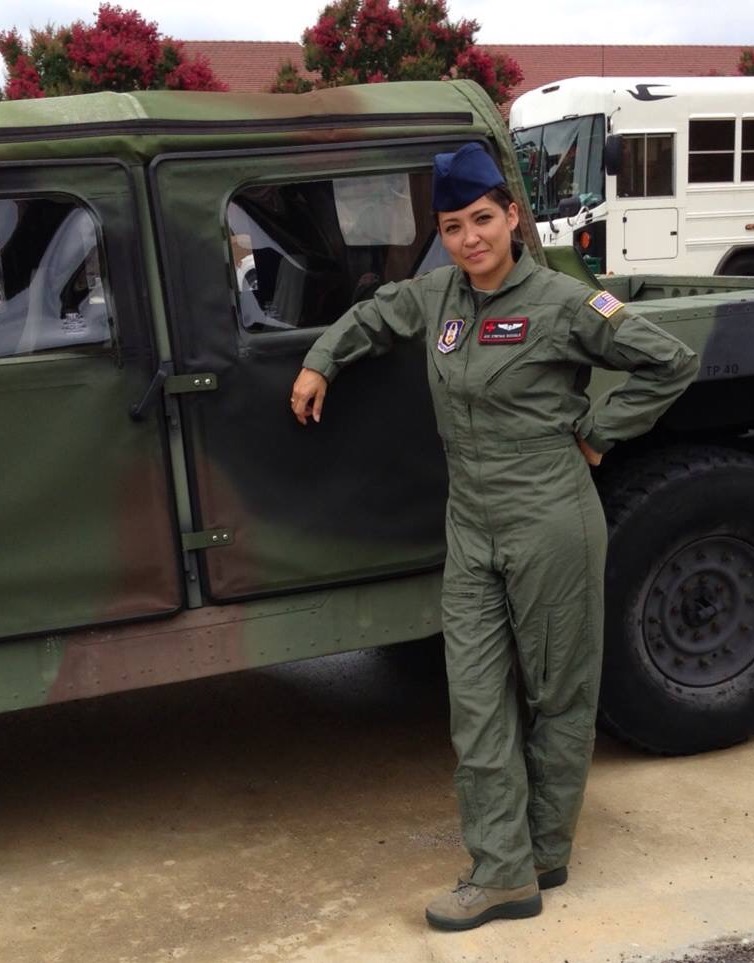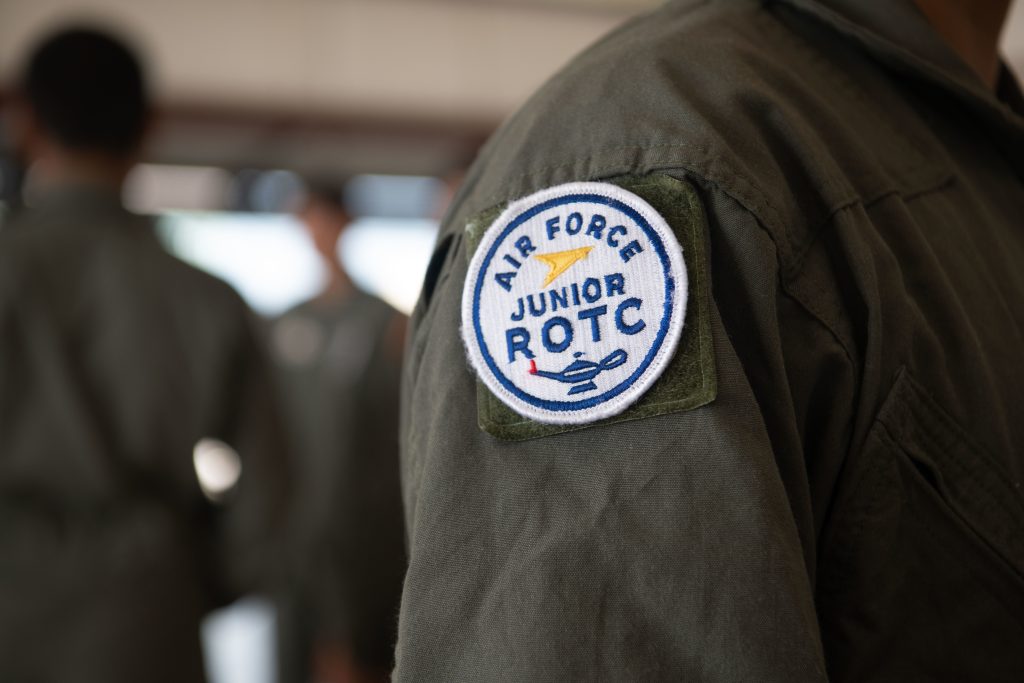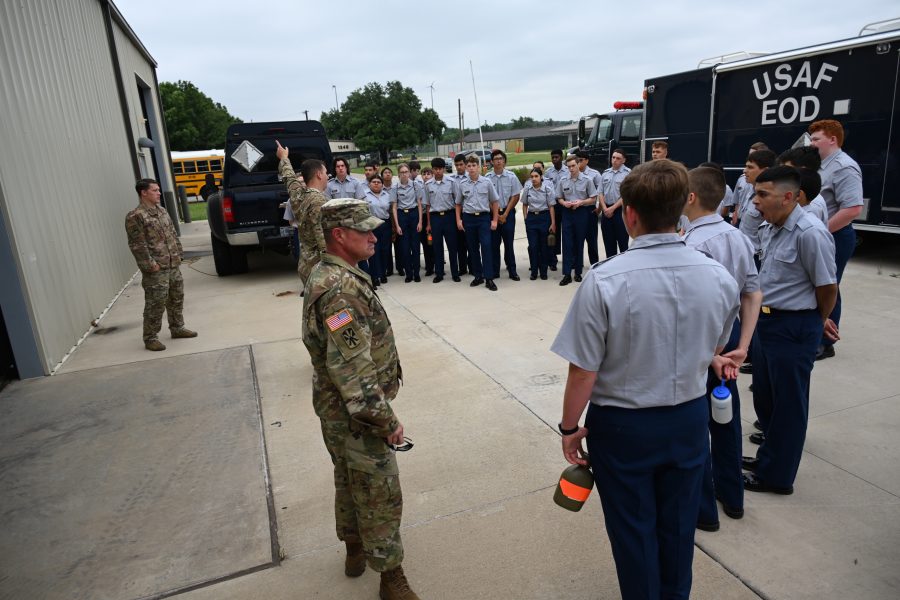As schools come back into session for the fall, drilling Guardsmen and Reservists will take up Air Force JROTC instructor duty for the first time ever.
As schools come back into session for the fall, drilling Guardsmen and Reservists will take up Air Force JROTC instructor duty for the first time ever.
“I’m not really done with my uniform,” explained Maj. Dawn Longfellow, an intelligence analyst in the Air National Guard who will be a JROTC instructor at Effingham County High School near Savannah, Ga. “I can add more to … my points for retirement. I can finish [Air Command and Staff College]. I can promote to lieutenant colonel if I find a position. And to tell you the truth, all of that advanced professional military education and training is so relevant to leading in the classroom—you’re a great role model because of all that.”
Longfellow, who just completed a tour as an AFJROTC instructor recruiter, said her experience has made her helpful to potential applicants trying to navigate the system. She identified issues and emailed applicants to share insights. Having also completed a tour at Officer Training School, she hopes that experience will prove valuable in the high school environment.
Col. Johnny R. McGonigal, director for Air Force JROTC, said having instructors with recent military experience will make JROTC more relatable to students.
Air Force Reserve Master Sgt. Cynthia Webster, the Reserve’s first drilling JROTC instructor, also agreed.
“I think it’s a win-win for everyone involved,” Webster said in a release. “Serving as a JROTC Instructor while simultaneously serving in the reserves helps senior NCOs relate to the junior members of their units. This will benefit the integration and fit of newly assigned personnel and allow unit leaders to develop deeper, more effective relationships with their workforce. It’s a win for currently serving reservists like me because it broadened the range of opportunities available in the area.”
Webster started as an aerospace science instructor at Mae Jemison High School in Huntsville, Ala., in July.

Instructor Shortage
If Webster, Longfellow, and their cohort are successful, the Guard and Reserve could be the answer to the long-term instructor shortage plaguing JROTC. While every AFROTC unit is supposed to have two instructors—one officer and one enlisted—close to one in five jobs is empty. Last spring, McGonigal told Air & Space Forces Magazine that 160 of 870 units had just one or no instructors.
“We are at all-time lows right now,” he said.
One year later the problem is worse: Some 240 billets are still vacant, according to the Air Force JROTC website. Vacancies run the gamut, from Alaska to Florida.
The pipeline for Guardsmen and Reservists is still new. Congress included a provision in the 2023 National Defense Authorization Ac, but it took the Pentagon until until April of this year to finalize pay tables and other details.
Since then, 84 Guard and Reserve members have applied, with nine accepted so far, an Air Force spokesperson said. Even more have expressed interest, the spokesperson added, “but we typically don’t start formally tracking them until they’ve initiated the application process.” In addition, nine veterans have applied. Under the new rules, veterans are also now eligible, while in the past, only retired members could get these jobs.
Pay and Eligibility
Junior ROTC started in 1911, and the first Air Force units stood up in 1966. Envisioned as a voluntary youth citizenship and self-discipline program, JROTC is not a recruiting program. But it does expose youth to the Air Force. In recent years, the program has been roiled by controversy, however, with reports of some schools automatically enrolling students, and also a few cases of sexual assault and abuse.
Meanwhile, stagnating pay and the demographics of military retirees has also changed the applicant pool and with fewer applicants, some locations are at risk of shutting down. Congress authorized expansion of eligibility for instructors to include any Guardsman, Reservist, or veteran with at least eight years of service.
The Air Force implementation of those rules is even stricter. Air Force JROTC instructor requirements call for:
- At least 10 years of military service
- Enlisted members at the rank of technical sergeant or higher
- Officers at the rank of captain through colonel or prior enlisted officers at any rank
- At least an associate’s degree (no exceptions allowed)
Pay is now more complicated. Under the old system, JROTC instructors were paid what they would earn if still on Active duty, including housing and subsistence allowances, with DOD and the local school splitting the cost. Now there is a Standardized Instructor Pay Scale, with set minimums baed on location, rank, and educational attainment.The school pays the salary, and the Air Force reimburses the school for half the pay. Schools are not limited to paying the minimum; instructors can negotiate beyond that with the school.
Longfellow said the pay will be less than she made before, but the duty makes that worthwhile, she said. “It’s super rewarding,” she said. “And I don’t have to deal quite so much with the layers of bureaucracy that are in the military.”



